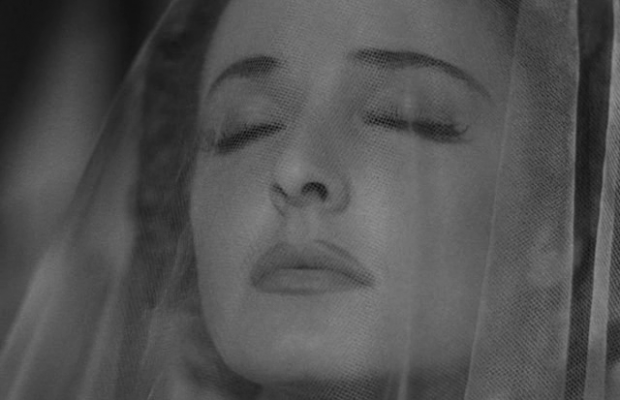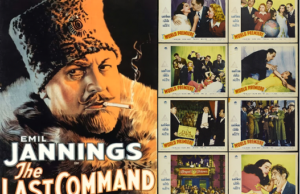The Locket (1946)

Toronto Film Society presented The Locket (1946) on Monday, November 13, 1978 in a double bill with San Francisco as part of the Season 31 Monday Evening Film Buff Series, Programme 3.
Production Company: RKO Radio Pictures. Director: John Brahm. Producer: Bert Granet. Screenplay: Sheridan Gibney. Photography: Nick Musuraca. Editor: J.R. Whittredge. Art Direction: Albert S. D’Agostino, Alfred Herman. Music: Roy Webb.
Cast: Brian Aherne (Dr. Blair), Laraine Day (Nancy), Robert Mitchum (Norman Clyde), Gene Raymond (John Willis), Sharyn Moffett (Nancy, age 10), Ricardo Cortez (Mr. Bonner), Henry Stephenson (Lord Wyndham), Katherine Emery (Mrs. Willis), Reginald Denny (Mr. Wendell), Fay Helm (Mrs. Bonner), Helene Thimig, Nella Walker, Queenie Leonard, Lillian Fontaine, Myrna Dell, Johnny Clark.
The Hollywood psychiatrists are hard at work probing the recesses of the human mind once again in The Locket, which opened yesterday at the Palace. The new attempt to dramatize why it is that some outwardly normal people are subject to irrational impulses comes off as rather ponderous entertainment, but there is no denying that the film contains a fair measure of morbid interest. And, unless the fad for so-called psychological drama has passed its zenith, The Locket should enjoy much the same popularity as its numerous predecessors. For this film has much the same virtues and faults of those others; perhaps even a few more faults, since neither Laraine Day nor Robert Mitchum display any discernible understanding of the characters they play.
As the protagonist who is a snare and a delusion for at least three men, it is revealed that Nancy Monks suffered a severe psychological shock as a girl when she was accused of stealing a locket which she had greatly desired to possess. That she didn’t actually steal the locket is impressed upon the audience quite early by Sheridan Gibney, the author, as is the idea that if one desires something strong enough that desire will be eventually gratified. This is a presumption, of course. Yet this is the premise the author uses to build a case of progressive insanity in a girl who, by lying and cheating with manifest charm and innocence, causes one man to die for a murder he didn’t commit; a second man to commit suicide and drives two others to the depths of despair….
Aside from a fundamental weakness in the script—even if the author’s premise is sounder than we think, it still is not developed with convincing logic—The Locket suffers from a studied slowness in pace. John Brahm, the director, was forced by the script to resort to extensive flashbacks which give the film an episodic quality. However, despite its numerous weaknesses, The Locket picks up momentum during the last half of the story, and that may be sufficient to satisfy some people.
The New York Times, T.M.P., March 20, 1947
It is interesting that reviewers in the 1940s oftgen complained about movies constructed in “flashback” form, since nowadays we think of such continuity devices as being happily redolent of that decade’s rather sophisticated film style. But Britain’s “Kine Weekly” was even more perplexed than the “New York Times” and demanded an end to it all (Still, the dreaded flashbacks carried on for a year or two more, before going out of vogue):–
“The tangled tale is unfolded in relays of flashbacks in which one or other of the leading characters acts as narrator and eccentric continuity causes its main thread to be lost. It’s time retrospective treatment and presentation were given a rest.”
John Brahm (born 1893) had an interesting career, at first in European and British films, working under his real name of Hans Brahm. His often macabre Hollywood subjects included two gothick classicks with Laird Cregar, The Lodger and Hangover Square. Just before The Locket, he guided the young Anne Baxter through a remarkable display of juvenile malevolence in the stylishly twisted Guest in the House.
Notes selected and written by Clive Denton















Leave a Reply